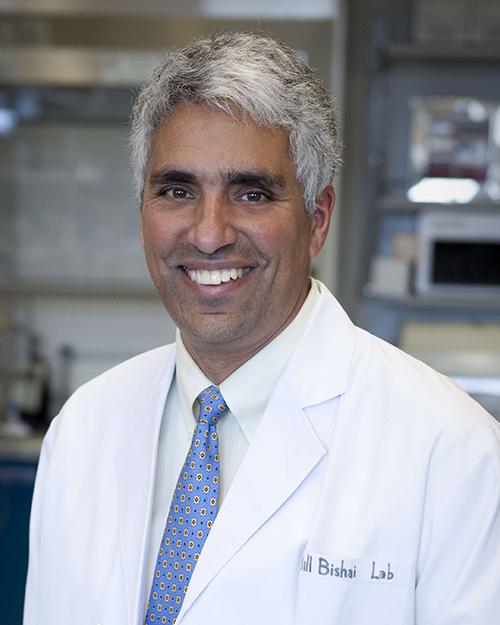Research Lab Results
-
Wilmer Bioinformatics Lab
Wilmer Bioinformatics has been mainly focused on ocular informatics. Specifically, the group develops and applies bioinformatics approaches to study gene regulation and signaling networks, with particular but not exclusive attention to the mammalian retina. Understanding the molecular basis of tissue specific gene regulation and signaling will contribute to better prevention, diagnosis and treatment of retinal disease. -
Karen Reddy Laboratory
The focus of the research in the Reddy Laboratory is to begin to understand how the nuclear periphery and other subcompartments contribute to general nuclear architecture and to specific gene regulation. Our research goals can be broken down into three complementary areas of research: understanding how genes are regulated at the nuclear periphery, deciphering how genes are localized (or ""addressed"") to specific nuclear compartments and how these processes are utilized in development and corrupted in disease.
-
Constance Monitto Lab
The Constance Monitto Lab conducts clinical research on pediatric pain management as well as basic science studies on chemotherapy resistance. In our pediatric pain management research, we work to assess the impact of low-dose opioid antagonism on opioid-related side effects, such as nausea and vomiting. We also analyze data on current methods of pediatric pain management in the United States. In addition, our team uses basic science studies to assess the success of epigenetic gene regulation on the development of resistance to chemotherapeutic agents in cancer. -
Andrew McCallion Laboratory
The McCallion Laboratory studies the roles played by cis-regulatory elements (REs) in controlling the timing, location and levels of gene activation (transcription). Their immediate goal is to identify transcription factor binding sites (TFBS) combinations that can predict REs with cell-specific biological control--a first step in developing true regulatory lexicons. As a functional genetic laboratory, we develop and implement assays to rapidly determine the biological relevance of sequence elements within the human genome and the pathological relevance of variation therein. In recent years, we have developed a highly efficient reporter transgene system in zebrafish that can accurately evaluate the regulatory control of mammalian sequences, enabling characterization of reporter expression during development at a fraction of the cost of similar analyses in mice. We employ a range of strategies in model systems (zebrafish and mice), as well as analyses in the human population, to illuminate the genetic basis of disease processes. Our long-term objective is to use these approaches in contributing to improved diagnostic, prognostic and therapeutic strategies in patient care.
-
James Hamilton Lab
The main research interests of the James Hamilton Lab are the molecular pathogenesis of hepatocellular carcinoma and the development of molecular markers to help diagnose and manage cancer of the liver. In addition, we are investigating biomarkers for early diagnosis, prognosis and response to various treatment modalities. Results of this study will provide a molecular classification of HCC and allow us to identify targets for chemoprevention and treatment. Specifically, we extract genomic DNA and total RNA from liver tissues and use this genetic material for methylation-specific PCR (MSP), cDNA microarray, microRNA microarray and genomic DNA methylation array experiments.
-
Xiao Group
The objective of the Xiao Group's research is to study the dynamics of cellular processes as they occur in real time at the single-molecule and single-cell level. The depth and breadth of our research requires an interdisciplinary approach, combining biological, biochemical and biophysical methods to address compelling biological problems quantitatively. We currently are focused on dynamics of the E. coli cell division complex assembly and the molecular mechanism in gene regulation. -
Sean Taverna Laboratory
The Taverna Laboratory studies histone marks, such as lysine methylation and acetylation, and how they contribute to an epigenetic/histone code that dictates chromatin-templated functions like transcriptional activation and gene silencing. Our lab uses biochemistry and cell biology in a variety of model organisms to explore connections between gene regulation and proteins that write and read histone marks, many of which have clear links to human diseases like leukemia and other cancers. We also investigate links between small RNAs and histone marks involved in gene silencing. -
William Bishai Laboratory
The William Bishai Laboratory studies the molecular pathogenesis of tuberculosis. The overall goal of our laboratory is to better understand tuberculosis pathogenesis and then to employ this understanding toward improved drugs, vaccines and diagnostics. Since Mycobacterium tuberculosis senses and adapts to a wide array of conditions during the disease process, it is clear that the regulation of expression of virulence factors plays an important role in pathogenesis. As a result, a theme of our research is to assess mycobacterial genes important in gene regulation. We are also interested in cell division in mycobacteria and the pathogenesis of caseation and cavitation.




